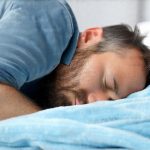Male bladder dysfunction encompasses a wide spectrum of issues, ranging from urgent need to urinate to complete inability to empty the bladder. These conditions significantly impact quality of life, affecting sleep, social interactions, and overall well-being. Often, treatment strategies focus on behavioral modifications like timed voiding or medications targeting the muscles controlling urination. However, as our understanding of hormonal influences grows, a question arises: can hormonal therapy play a role in managing these complex conditions? This is not a simple yes or no answer, as the relationship between hormones and bladder function is nuanced and varies based on the specific type of dysfunction experienced by an individual.
Traditionally, treatment has largely centered around urological interventions – addressing physical obstructions or strengthening pelvic floor muscles. But increasingly, research points to the significant impact hormonal imbalances can have on bladder health. This isn’t necessarily about “low testosterone” being the root cause for everyone; it’s more about recognizing that hormones—including testosterone, estrogen (yes, even in men!), and others – interact with the nervous system and muscles involved in bladder control. Exploring hormonal therapies as adjunct or alternative treatments requires careful consideration, personalized assessment, and a thorough understanding of potential benefits and risks. This article will delve into the current state of research regarding using hormone therapy for male bladder dysfunction.
Understanding the Hormonal Landscape & Bladder Function
The link between hormones and bladder function isn’t always immediately obvious. For years, treatment focused almost exclusively on the physical aspects of the urinary system. However, it’s now understood that several hormonal systems play a role in maintaining proper bladder control. Testosterone, often associated with masculinity, impacts muscle mass – including the detrusor muscle responsible for bladder contraction. Lower testosterone levels can contribute to decreased bladder capacity and reduced contractile strength. But it’s not just about quantity; how testosterone is metabolized and converted into other hormones also matters.
Furthermore, estrogen—present in small amounts in men—is crucial for maintaining healthy pelvic floor muscles. These muscles support the bladder and urethra. A decline in estrogen (which can occur with age or certain medical conditions) can lead to weakening of these muscles, increasing the risk of urinary incontinence. Other hormones like prolactin and cortisol also exert influence on bladder function through their effects on fluid balance and stress responses which affect nervous system control of urination. The intricate interplay between these hormonal systems makes diagnosing and treating hormone-related bladder dysfunction complex.
The key takeaway here is that hormonal imbalances can disrupt the delicate equilibrium needed for proper bladder function, leading to a variety of symptoms. Recognizing this connection opens up possibilities beyond traditional urological treatments – but it also necessitates careful evaluation to determine if hormones are actually contributing to the problem in an individual patient.
Testosterone Therapy & Overactive Bladder
Overactive bladder (OAB) is characterized by a sudden and compelling urge to urinate, often leading to involuntary urine leakage (urgency incontinence). While typically treated with medications like anticholinergics or behavioral therapy, some studies have explored the potential of testosterone therapy as an adjunct treatment. The rationale stems from testosterone’s role in maintaining muscle mass and potentially improving detrusor muscle function.
- Initial research suggests that men with low testosterone levels who experience OAB may benefit from carefully monitored testosterone replacement therapy (TRT).
- However, it’s crucial to note that TRT is not a universal solution. It’s most likely to be effective in individuals where low testosterone is demonstrably contributing to the bladder dysfunction.
- The benefits of TRT for OAB are still under investigation, and results have been mixed. Some studies show improvements in urgency symptoms and reduced incontinence episodes, while others report little or no effect.
It’s also important to acknowledge the potential risks associated with TRT, including prostate enlargement, increased red blood cell count, and cardiovascular issues. Therefore, a thorough evaluation by a physician, including PSA testing and assessment of overall health, is essential before initiating TRT for OAB. It’s not simply about increasing testosterone levels – it’s about restoring hormonal balance in a safe and effective manner.
Estrogen & Stress Urinary Incontinence (SUI)
Stress urinary incontinence (SUI), often occurring after prostate surgery or due to weakening pelvic floor muscles, involves urine leakage during physical activity like coughing, sneezing, or exercise. While commonly associated with women, SUI can affect men as well. Here, the role of estrogen is surprising but significant. Men convert testosterone into estrogen through a process called aromatization, and this estrogen plays a vital role in maintaining pelvic floor muscle health.
- Lower estrogen levels (which can occur naturally with aging or be exacerbated by certain medications) can contribute to weakening of these muscles, increasing the risk of SUI.
- In some cases, low-dose estrogen therapy has been explored as a potential treatment for male SUI, aiming to strengthen pelvic floor muscles and improve urethral support.
- This approach is still relatively new, and research findings are limited. However, preliminary studies suggest that carefully monitored estrogen therapy might offer benefits for select men with SUI.
The use of estrogen in men is often met with concern due to potential side effects. However, the doses used in these therapies are typically very low—far below those prescribed for women – and are administered under strict medical supervision. Careful monitoring for any adverse effects is paramount.
Addressing Hormonal Imbalances Holistically
Successfully integrating hormonal therapy into a treatment plan for male bladder dysfunction requires a holistic approach. It’s not just about identifying and correcting a single hormone deficiency; it’s about understanding the complex interplay between all relevant hormonal systems and addressing underlying imbalances. This process typically involves several steps:
- Comprehensive Assessment: A thorough medical history, physical examination, and diagnostic testing are crucial. This includes blood tests to assess testosterone, estrogen, prolactin, cortisol, and other relevant hormone levels. Urological evaluation is also essential to rule out any structural abnormalities or obstructions.
- Personalized Treatment Plan: Based on the assessment results, a physician will develop a personalized treatment plan tailored to the individual’s specific needs. This may involve hormonal therapy (TRT, low-dose estrogen), behavioral modifications, pelvic floor muscle exercises, or other interventions.
- Ongoing Monitoring & Adjustment: Hormonal therapy requires ongoing monitoring to assess effectiveness and adjust dosages as needed. Regular blood tests are essential to ensure hormone levels remain within a safe and therapeutic range. Patients should also be monitored for any adverse effects.
Importantly, hormonal therapy is rarely the sole solution. It’s often most effective when combined with other treatment modalities, such as pelvic floor muscle training (Kegel exercises), lifestyle modifications (reducing caffeine intake, managing fluid intake), and behavioral therapy. The goal isn’t simply to restore hormone levels but to improve overall bladder function and quality of life. A collaborative approach involving a urologist, endocrinologist, and potentially a physical therapist is often the most effective way to manage male bladder dysfunction holistically.





















